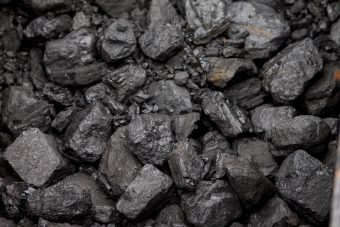
U.S. coal production totaled 535 million short tons (MMst) in 2020, a 24 percent decrease from the 706 MMst mined in 2019 and the lowest level of coal production in the United States in any year since 1965.
The decline of U.S. coal production in 2020 was largely the result of less demand for coal internationally and less U.S. electric power sector demand for coal. Lower natural gas prices made coal less competitive for power generation. U.S. coal-fired generation fell 20 percent from 2019.
Natural gas prices started 2020 relatively low because mild winter weather led to less natural gas demand for space heating, and prices remained low as the economic effects of the COVID-19 pandemic reduced both natural gas production and consumption.
U.S. coal exports were 26 percent lower in 2020 than they were in 2019. The COVID-19 pandemic slowed global demand for coal, and some U.S. coal mines were idled for extended periods to slow the spread of the virus among workers. Coal exports decreased significantly in April 2020 as the United States and countries around the world responded to the pandemic.
More:
The Clean Air Act of 1970 restricted sulfur emissions from new coal-fired power plants. One way for coal plants to meet the emissions regulations was to use subbituminous coal, which has a lower sulfur content than other coal types. This change, along with the oil shortages and the resulting high oil prices of the 1970s that made coal more economical, contributed to the expansion of mining and the development of large, open-pit coal mines in the Powder River Basin (located in Northeast Wyoming and Southeast Montana), where the majority of subbituminous coal in the United States is found.
One of the largest U.S. coal-producing mines by volume, Black Thunder, opened in Wyoming in 1977. Today, the Powder River Basin accounts for approximately 43 percent of all coal produced in the United States.
More coal is produced in Wyoming, representing 41 percent of U.S. coal production (219 MMst) in 2020, than in any other state. Coal production in Wyoming was 21 percent lower in 2020 than it was in 2019.

Coal production in West Virginia, the state with the second-most coal output, fell by an even larger share than Wyoming in 2020, declining 28 percent from 2019. West Virginia is a primary producer of metallurgical coal, which is used to produce coke, the primary fuel for steelmaking. U.S. metallurgical coal exports dropped 20 percent in 2020.
Coal production stopped after the first quarter of 2020 in Oklahoma and Tennessee.
We estimate weekly coal production using coal railcar loadings. So far in 2021, weekly coal railcar loadings have been trending higher than 2020 levels, and the most recent year-to-date coal railcar loadings are up 9,5 percent compared with 2020.
We expect these increases in production to continue for the remainder of 2021. In our latest Short-Term Energy Outlook (STEO), we forecast that U.S. coal production will increase by 15 percent in 2021, driven primarily by rising electricity demand, and U.S. exports will increase by 21 percent, driven by rising demand for steam coal in Europe and Asia.
Source: Clean Technica



